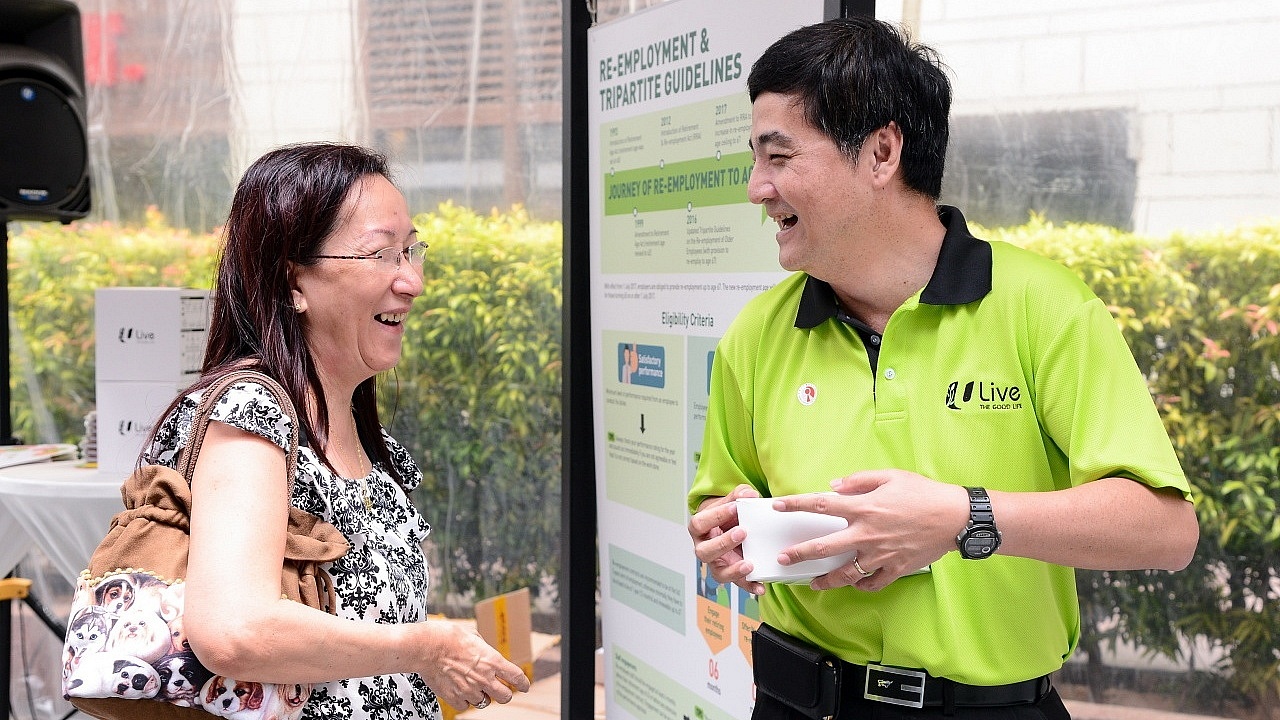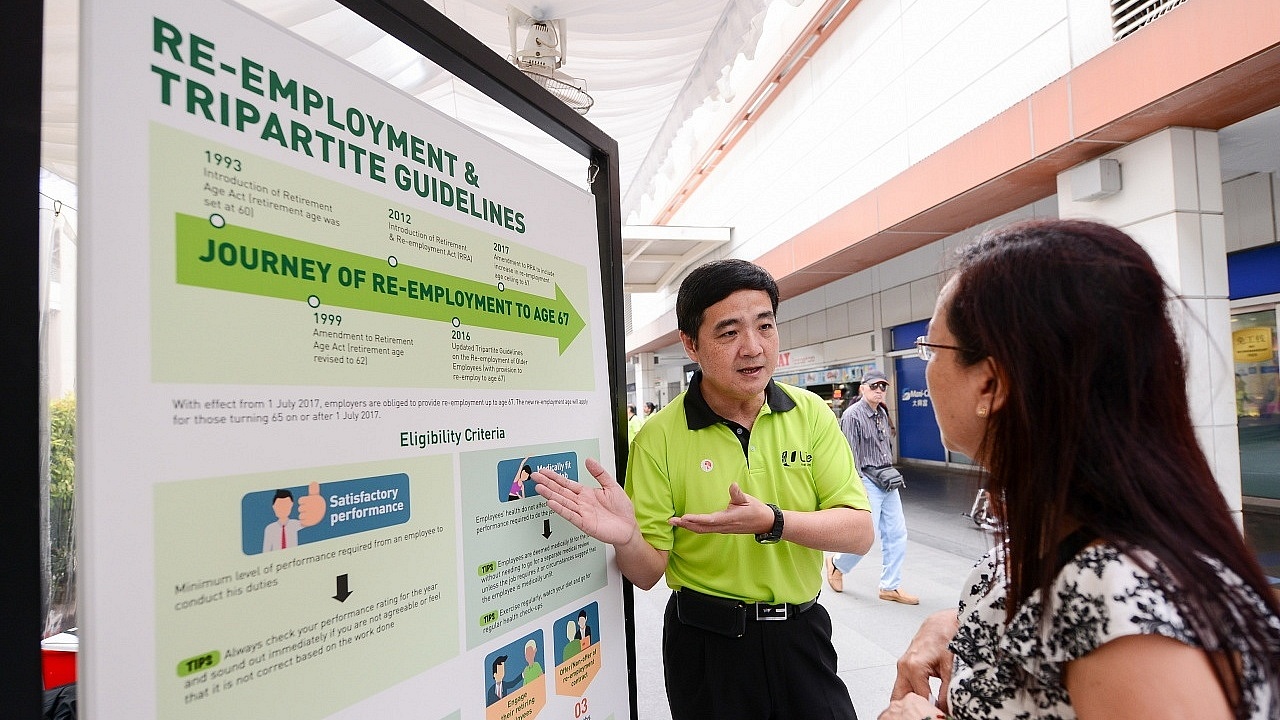On 1 July 1979, a product was launched that took the world by storm. It was the Sony Walkman. With that invention, music was not only personalised but rendered mobile. Exactly 38 years later, 1 July 2017 will also be an important date. On that day, the amended Retirement & Re-employment Act (RRA) will take effect in Singapore. The enactment of the amended RRA has many similarities with the introduction of the Walkman.
Over the next three decades since its launch, the Walkman underwent many changes in looks and functions to meet and excite the ever-growing expectations of customers. I own a CD version of Walkman – and it still works.

Fast forward to today. When people listen to their personalised playlists on their mobile devices, where do they get their music from? Few would say from CDs and fewer still from tape cassettes. Many might say Spotify or some other music streaming platforms that come in the form of an app on their mobile phones. Indeed, the Sony Walkman itself lives on very successfully through a SonyMusic app in Sony Experia mobile devices.
The Sony Walkman tells a story of how a new thing can revolutionise expectations and behaviour. It is also a story of continual innovation, adaptation and improvement. Ultimately, it is also a story of transformation into something quite different from the original (software app versus hardware product) yet still serving the same deep thirst and demand for personalised and mobile enjoyment of quality music.
This tale reminds us of some important truths:
- There will always be rewards for supplying what the market demands. For companies, this could be a sought-after product or service. For individuals, this could be a job or an income-making opportunity in exchange for time, talent and relevant experience. For legislation, this would mean to make laws that regulate essential relations among interested parties in key areas based on fairness and aimed at progression.
- How demands are met will change over time, as tastes, expectations, technology and demographics interplay. It is extremely rare to have a product or service that can both stay unchanged and yet enjoy everlasting success – whether it is a particular job description, product, service or law.
- While the ways through which demands are met will evolve and transform, the inherent demands – meeting the material and higher-order needs of the human person – will remain resilient across time. Therefore, those who are continually able to find cheaper, better, faster ways to meet and develop such needs will retain and grow their value, and not risk obsolescence.

Enactment of the RRA
The RRA was enacted by Parliament in January 2011 and put into effect from January 2012. The key breakthrough in the original piece of legislation was to further prolong the employment of mature workers reaching the statutory retirement age of 62 through fair yet more flexible re-employment till age 65. In a way, the enactment of this law was a “Walkman-like launch moment” for the employment of workers reaching statutory retirement age.
Then, in January 2017, Parliament passed amendments to the RRA to further enhance its usefulness to both mature workers and their companies. Parliament also mandated that the amended law kicks in from 1 July 2017. In gist, the amendments brought three key improvements:
- The Re-employment Age Ceiling will be raised from 65 to 67. This gives mature workers reaching age 65 additional statutory help to earn another two years of pay.
- The section in the original RRA allowing employers to reduce the pay of workers at age 60 subject to certain conditions is repealed. The section was there previously to balance the negative effect that a tenure-based wage system has on the employment of older workers. The Labour Movement has been arguing for its repeal for a long time, given that wages have become much more performance-based over the years. We are delighted that this is removed.
- Employers who have done their best to find suitable jobs within their companies for their workers reaching age 62 but who for valid reasons are unable to do so now have an additional way to comply with the law. They can source for positions with another employer. If the older worker accepts the job offer with the new employer (it has to be in writing), the transfer of employment can take place, and the original employer is deemed to have fulfilled its obligation under the RRA. The new employer takes on the full obligations as if it was the original employer. This enlarges the potential pool of jobs for our mature workers and is particularly useful when job growth slows.

On the part of the Labour Movement, our unions have been actively working with unionised companies to put policies and practices in place for the 1 July 2017 start date. In August 2016, the percentage of unionised companies surveyed which were clearly ready to re-employ to at least age 67 was about 75 per cent. This figure has gone up to 90 per cent in the latest survey. The remaining 10 per cent are basically those whose workforces are relatively young and would not require re-employment in the near future. We are updated and ready!
In a way, this amended law gave a hardware upgrade to our original “RRA Walkman”. There may be more tweaks in time to come.
While improving the law is good and necessary, it is not sufficient on its own to ensure the employment and employability of mature workers.
Just as the Walkman lives on successfully through software applications in mobile devices, we must also invest in the software of our mature workers to truly assist them for the long haul. That is the way to sustain their attractiveness to employers facing fast-changing consumer patterns and technological flux. This builds internal strength and value in our mature workers, over and beyond whatever external help (laws, enlightened employer mindsets, tight Labour market conditions) there might be at any point in time.
What is this “software” investment that we must make in our mature workers? In essence, we must focus on three areas:
- Evergreen workers
Encourage and enable mature workers to pursue continuous skills upgrading and adaptation within the same or different job types or even industries. Helping mature workers make the most of SkillsFuture will make a big difference to their confidence, resilience and prospects.
- Ageless workplaces
Nudge and help employers reshape their job designs, work processes and workplaces to be more age universal. With progressive mindsets and availability of much better technology, this is increasingly practical. The Government’s WorkPro Programme is full of incentives to catalyse and ease such efforts.
- Workplace health and safety
Promote workplace health and safety for older workers, especially through occupation-specific customisation. In the face of an ageing local workforce, such efforts will lower health costs for both workers and companies, and raise work effectiveness and quality. This is a basic ingredient in the endless quest for higher productivity, competitiveness, employability and morale.
Music will always be part of the human experience. This is why we have positive terms like “it is music to their ears” and also stress-laden ones like “they have to face the music for what they have done or omitted to do”.
By making wise choices and doing the right things while time and opportunity permit, we make music that would continue to delight our ears.
This is a post by NTUC Deputy Secretary-General Heng Chee How. Any extracts should be attributed back to the author. 30 June 2017.

